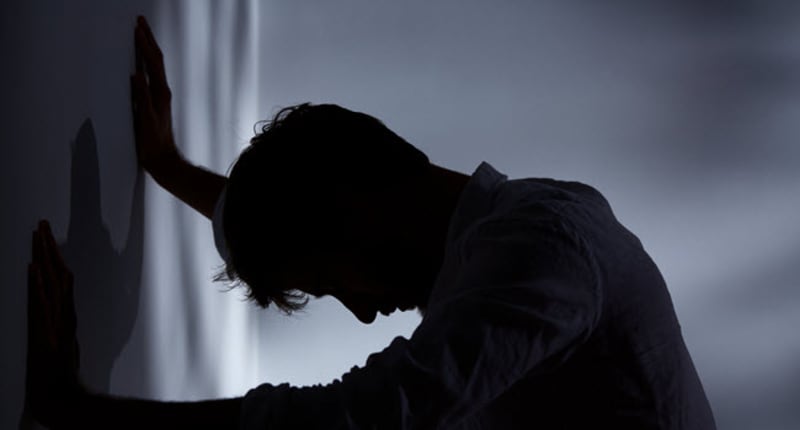
By Dr Maniker Inder Singh and Dr V Senthil Kumar Reddi
Suicides, both worldwide and in India, unveil silent struggles, shedding light on the profound yet muted issues faced by many. A tragic response to overwhelming mental anguish, suicide is a significant public health issue globally, resulting in numerous premature deaths. Almost one in every four worldwide suicides occurs in India. Furthermore, the profile of those vulnerable to suicide in India significantly contrasts with global data. For example, rates of suicides among women in India are disproportionately greater than those noted globally. A heightened awareness of the complexity of suicide underscores the pressing need for early and proactive intervention.
Suicide rates continue to escalate, reflecting the myriad challenges faced by individuals in distress. A convergence of rapid, multifaceted, disruptive transformation across domains of life, persistent stigma, and a general lack of awareness enhance vulnerability to suicide– a stark reminder of a larger, concerning global picture. The same has become increasingly evident at a time when Indian society is undergoing a transition.
In a recent incident, a young person, overwhelmed by thoughts, teetered on the edge of despair, contemplating suicide. The turning point came in the form of a tweet, a subtle yet unmistakable cry for help. A friend, recognising the gravity, reached out to authorities. With swift coordination and empathy, they intervened, saving a life. This incident highlights the power of awareness and community support in preventing suicide, while reinforcing that effective prevention strategies demand a collective approach.
Stigma around suicide remains a significant barrier. Emotional distress often persists, given that seeking help is considered a weakness. Economic pressures and financial instability further exacerbate stress and anxiety, while limited access to resources leaves individuals isolated and unsupported.
Thus, implementing multilevel suicide prevention strategies in rural underserved areas and urban settings, given their diverse profiles, is imperative. Community-level and at-risk groups strategies warrant intersectoral and trans-sectoral approaches.
A holistic approach is essential, as a complex interplay of factors contributes to suicide. Integral to the same is to prioritise positive mental health and awareness. These efforts can help dispel myths, reduce stigma, and encourage open conversations about well-being. Encouraging people to reach out can break the cycle of silence and stigma, facilitating timely help-seeking.
Addressing economic hardships and social stigma requires collaboration across sectors. Creating support networks and promoting inclusive policies can mitigate factors contributing to vulnerability. Substance use, often intertwined with suicide crisis, impacts judgement and decision-making. Policies addressing this facet are essential for mitigating risks of impulsive and irreversible decisions.
Technology’s role is complex in India’s dynamic social fabric. The tech revolution opened infinite possibilities but also spawned unforeseen challenges. Excessive use, especially during formative years, can impair critical mental skills such as problem-solving and coping, exaggerating vulnerability to suicide. Despite the paradox of loneliness in a connected world, technology can be a lifeline. Digital platforms can bridge gaps, offering swift support and resources, especially in India, where access to help remains limited.
The key to suicide prevention is to encourage discussions around suicide and its warning signs. Gatekeeper training for community members helps develop a critical pool of societal resources to identify those at risk, creating a safety net of support.
By advocating awareness and reducing stigma by focusing on stories of recovery and resilience, the media can foster hope among those vulnerable.
Proactive National initiatives, including the National Suicide Prevention Strategy 2022, Tele- MANAS Programme, Mental Health Act 2017, school-centric UMMEED (Understand, Motivate, Manage, Empathise, Empower, Develop) guidelines, complemented by programmes that aim to alleviate multifaceted challenges in Indian society, and decriminalisation of suicide, reflect the government’s commitment to battle suicide.
Cultivating adaptive coping strategies equips individuals to handle life’s challenges, fostering resilience. Robust family and social connections are crucial. Seeking guidance through community resources or personal counselling demonstrates strength. Together, these elements buffer against life’s harshest moments.
Thus, elements of suicide prevention include ensuring universal access to care, a fundamental right. Concurrently, building an inclusive, empathetic society that values well-being and challenges suicide stigma is essential. Furthermore, promoting open conversations about suicide, sharing stories of recovery, and highlighting the relevance of reaching out is crucial.
- Dr Singh is Senior Resident and Dr Reddi is Professor, Department of Psychiatry, NIMHANS, Bengaluru. This is the second of a DH-NIMHANS series on mental health. The article was originally published by Deccan Herald
Follow this link to join our WhatsApp group: Join Now
Be Part of Quality Journalism |
Quality journalism takes a lot of time, money and hard work to produce and despite all the hardships we still do it. Our reporters and editors are working overtime in Kashmir and beyond to cover what you care about, break big stories, and expose injustices that can change lives. Today more people are reading Kashmir Observer than ever, but only a handful are paying while advertising revenues are falling fast. |
| ACT NOW |
| MONTHLY | Rs 100 | |
| YEARLY | Rs 1000 | |
| LIFETIME | Rs 10000 | |









